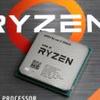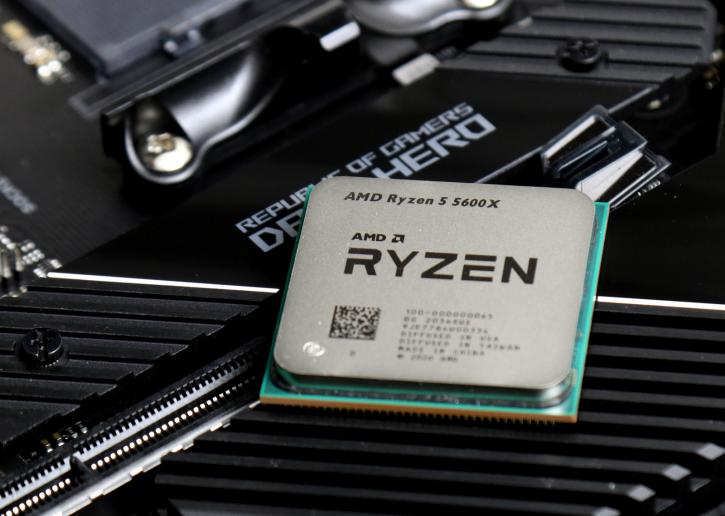Introduction
AMD Ryzen 5 5600X processor
ZEN3 is here and in this review we'll have a stab at the six-core part, the Ryzen 5 5600X. Overall, this processor series is to bring extensive single and multi-thread workload performance gains. The 5600X might be the new sweet-spot for gaming. Released by AMD as a new architecture that will once again attack Intel, this round with a substantial focus on your enthusiast-class gaming performance. Overall, this processor series is to bring massive single and multi-thread workload performance gains. It has only been three years, my fellow gurus; 2017 was the year when AMD released its first-generation ZEN based processors. And where Intel has gone from tic-tock to tock tock tock tock tock .... AMD has been applying a tick almost every year, and that is wondrous. For those that I just lost here, a tick would be a new architecture; a tock is the refresh of an architecture. And not just that, AMD has been venturing hard on new fabrication processes available. Ergo they're already using refined 7nm production with 5nm in the vicinity, whereas Intel's current desktop processors are still fabricated at 14nm. AMD still had a few architecture disadvantages; for you, the Guru3D reader that mostly presented itself at CPU bound gaming, whereas Intel has had the performance lead. And that today is going to change, as with ZEN3 AMD is to pass intel in that segment as well (for now). And sure, there will be some wins and losses for each brand, but that main concern we can already tell you has been eliminated with Ryzen 5000 ZEN3 based processors.
ZEN3 series processors
AMD has announced its first ZEN3 based Ryzen 5000 processors. This article will look at what has been announced and what we can expect over the next few weeks. Well, that and a bunch of tests and benchmarks, of course! AMD has been talking about ZEN3 with a bit of a smile on their face for a long time now, and as it turned out, for a good reason. ZEN was impressive, ZEN2 was really good, and ZEN3, genuinely, is great. ZEN, of course, being the codename behind the processor architecture. ZEN3 promised an updated architecture with increased IPC (raw core for clock performance) combined with the now-familiar chiplet designs that offer better yields. AMD has been continuously pushing the limits of the chip-fabrication foundries, and let's face it, 7nm production has been a sweet spot for AMD. They produce good yields ever since the initial launch. Yields are good because of that chiplet design; see when you fab monolithic and only get 30 chips from a wafer with a 60% yield, you end up with 18 working die's. When you use chiplets (multiple chips per package), you can fab perhaps 200 chips per wafer, and with the same yield ratio, you all of a sudden have 120 working die's. And therein is part of the secret found with AMD's recent successes.
Gaming and performance king?
A lot has been said and spoken about Ryzen 5000, or the artists previously known as ZEN3; AMD single and multi-threaded performance have been great overall but has been struggling a bit more with high FPS and CPU bound games. That last bit is not solely due to the processor, as the gaming industry has been on an Intel intravenous drip for a decade and optimized their procs the best. This thesis is wider than that as AMD has had architectural disadvantages in its processor design, the cluster design, I should say. AMD's ZEN and ZEN2 processor dies each holds 8-cores. However, within that real estate, you'll have learned that these eight cores are clustered in two groups of four. In there are some latency issues to be found as the two 4-core partitions communicate with more latency; it's part of the root cause of that gaming differential. The solution to that last hurdle often is twofold; the first -- brute force your way out of there with increased IPC (your raw per clock cycle performance). You can do that by making more efficient buffers, caches, basically creating stronger performing cores. Of course, a second methodology is something we see at Intel, raise that clock frequency as high as possible. Overall, Intel is King of High turbo clock frequencies but a notch weaker in IPC. On the other hand, AMD has been powerful on IPC but less so in that absolute peak clock frequency. Now it isn't that AMD processors perform badly in games, as that isn't the truth whatsoever, but that lacking 5% or 10% game performance in the most extreme situations (GeForce RTX 3090 / CPU bound games / high FPS games), no it's the fact that they could not pass Intel in that segment. That has been haunting them and, in the end, is something that the more enthusiast end-user would stare himself blind at. It also created a reputation, a stigma of some sort, and no matter how good the processor series and its infrastructure have been, the first thing that people ask me is this "is it faster than Intel in games'. Well, it is starting today. And that is thanks to yet another IPC increase and a fundamental change in the architectural move from two four-core clusters within a die towards one fully unified 8-core cluster.
This article uses a base narrative for all our Ryzen 5000 processors reviews. In this article we test:
- Ryzen 5 5600X (6c/12t) priced at 299 USD
We’ll go into detail on the next pages. The Ryzen 3000 series 5, 7, and 9 processors are six up-to sixteen-core processors, competitively priced combined with a proper performance increase over the last generation products.


